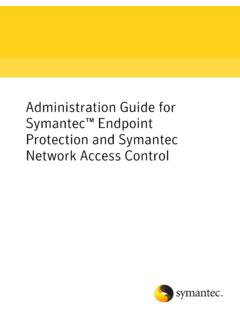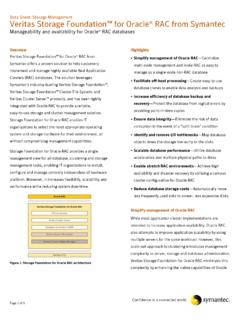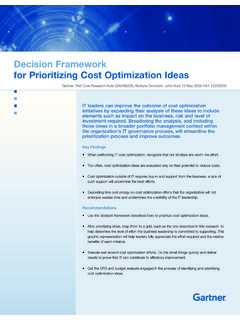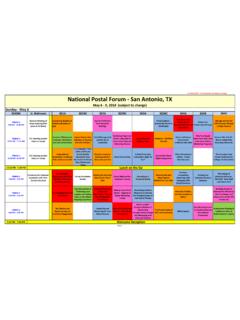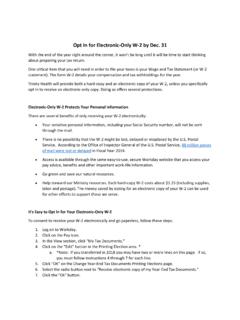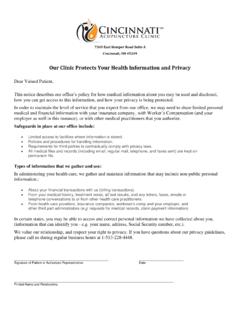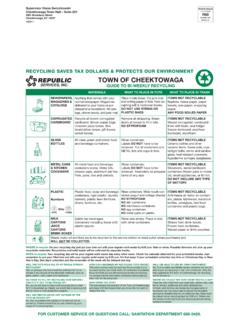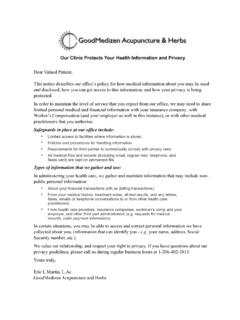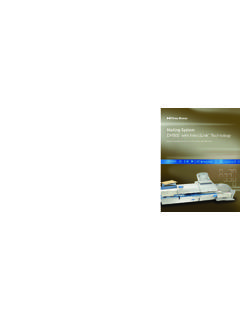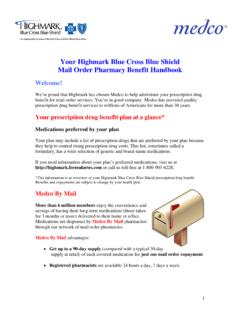Transcription of Symantec Hosted Mail Security Administration Guide
1 Symantec Hosted mail Security Administration Guide Symantec Hosted mail Security Administration Guide Copyright 2006 Symantec Corporation. All rights reserved. Federal acquisitions: Commercial Software - Government Users Subject to Standard License Terms and Conditions. Symantec , the Symantec logo, and Norton AntiVirus are registered trademarks of Symantec Corporation. LiveUpdate, Symantec AntiVirus, Symantec Enterprise Security Architecture, and Symantec Security Response are trademarks or registered trademarks of Symantec Corporation in the United States and certain other countries. pages is a trademark of Microsoft Corporation. Additional company and product names may be trademarks or registered trademarks of the individual companies and are respectfully acknowledged. The product described in this document is distributed under licenses restricting its use, copying, distribution, and decompilation/reverse engineering.
2 No part of this document may be reproduced in any form by any means without prior written authorization of Symantec Corporation and its licensors, if any. THIS DOCUMENTATION IS PROVIDED AS IS AND ALL EXPRESS OR IMPLIED. CONDITIONS, REPRESENTATIONS AND WARRANTIES, INCLUDING ANY IMPLIED. WARRANTY OF MERCHANTABILITY, FITNESS FOR A PARTICULAR PURPOSE OR NON- INFRINGEMENT, ARE DISCLAIMED, EXCEPT TO THE EXTENT THAT SUCH. DISCLAIMERS ARE HELD TO BE LEGALLY INVALID, Symantec CORPORATION SHALL. NOT BE LIABLE FOR INCIDENTAL OR CONSEQUENTIAL DAMAGES IN CONNECTION. WITH THE FURNISHING PERFORMANCE, OR USE OF THIS DOCUMENTATION. THE. INFORMATION CONTAINED IN THIS DOCUMENTATION IS SUBJECT TO CHANGE. WITHOUT NOTICE. Symantec Corporation 20330 Stevens Creek Blvd. Cupertino, CA 95014. Technical Support Symantec Technical Support maintains support centers globally.
3 Technical Support's primary role is to respond to specific queries about product feature and function, installation, and configuration. The Technical Support group also authors content for our online Knowledge Base. The Technical Support group works collaboratively with the other functional areas within Symantec to answer your questions in a timely fashion. For example, the Technical Support group works with Product Engineering and Symantec Security Response to provide alerting services and virus definition updates. Symantec 's maintenance offerings include the following: A range of support options that give you the flexibility to select the right amount of service for any size organization Telephone and Web-based support that provides rapid response and up-to- the-minute information Upgrade insurance that delivers automatic software upgrade protection Global support that is available 24 hours a day, 7 days a week worldwide.
4 Support is provided in a variety of languages for those customers that are enrolled in the Platinum Support program Advanced features, including Technical Account Management For information about Symantec 's Maintenance Programs, you can visit our Web site at the following URL: Select your country or language under Global Support. The specific features that are available may vary based on the level of maintenance that was purchased and the specific product that you use. Contacting Technical Support Customers with a current maintenance agreement may access Technical Support information at the following URL: Select your region or language under Global Support. Before contacting Technical Support, make sure you have satisfied the system requirements that are listed in your product documentation.
5 Also, you should be at the computer on which the problem occurred, in case it is necessary to recreate the problem. When you contact Technical Support, please have the following information available: Product release level Hardware information Available memory, disk space, NIC information Operating system Version and patch level Network topology Router, gateway, and IP address information Problem description: Error messages and log files Troubleshooting that was performed before contacting Symantec Recent software configuration changes and network changes Licensing and registration If your Symantec product requires registration or a license key, access our technical support Web page at the following URL: Select your region or language under Global Support, and then select the Licensing and Registration page.
6 Customer service Customer service information is available at the following URL: Select your country or language under Global Support. Customer Service is available to assist with the following types of issues: Questions regarding product licensing or serialization Product registration updates such as address or name changes General product information (features, language availability, local dealers). Latest information about product updates and upgrades Information about upgrade insurance and maintenance contracts Information about Symantec Value License Program Advice about Symantec 's technical support options 5. Nontechnical presales questions Issues that are related to CD-ROMs or manuals Maintenance agreement resources If you want to contact Symantec regarding an existing maintenance agreement, please contact the maintenance agreement Administration team for your region as follows: Asia-Pacific and Japan: Europe, Middle-East, and Africa: North America and Latin America: Additional enterprise services Symantec offers a comprehensive set of services that allow you to maximize your investment in Symantec products and to develop your knowledge, expertise, and global insight, which enable you to manage your business risks proactively.
7 Additional services that are available include the following: Symantec Early Warning These solutions provide early warning of cyber attacks, Solutions comprehensive threat analysis, and countermeasures to prevent attacks before they occur. Managed Security These services remove the burden of managing and monitoring Services Security devices and events, ensuring rapid response to real threats. Consulting services Symantec Consulting Services provide on-site technical expertise from Symantec and its trusted partners. Symantec Consulting Services offer a variety of prepackaged and customizable options that include assessment, design, implementation, monitoring and management capabilities, each focused on establishing and maintaining the integrity and availability of your IT resources. Educational Services These services provide a full array of technical training, Security education, Security certification, and awareness communication programs.
8 To access more information about Enterprise Services, please visit our Web site at the following URL: Select your country or language from the site index. 6. Contents Chapter 1 Introducing Symantec Hosted mail Security About Symantec Hosted mail Security .. 12. How Symantec Hosted mail Security works .. 12. How Symantec Hosted mail Security protects against virus threats .. 13. What happens during a virus scan .. 14. If a virus is detected .. 15. How Symantec Hosted mail Security protects against spam .. 16. About automatic spam filters .. 16. About customized allow and deny lists .. 19. How Symantec Hosted mail Security protects against undesirable content 20. How content filtering dictionaries work .. 21. About URL click-through protection .. 21. About spam beacon blocking .. 21. About language identification blocking.
9 22. Where to find more information about Symantec Hosted mail Security .. 22. Contacting Technical Support .. 23. Contacting Customer Service .. 23. Reporting missed spam to Symantec .. 23. Reporting false positives to Symantec .. 24. Chapter 2 Configuring Symantec Hosted mail Security About the Symantec Hosted mail Security Console .. 26. Redirecting your inbound MX records .. 27. Setting up your outbound server .. 29. Adding an Outbound Disclaimer .. 30. Understanding hierarchy levels and user roles .. 31. Managing domain accounts .. 33. Searching for a domain or alias domain .. 33. Viewing domain configuration information .. 33. Adding alias domain names .. 35. Deleting alias domain names .. 36. Managing user accounts .. 36. Designating how user accounts are created or deleted .. 37.
10 Creating user accounts manually .. 37. Manually deleting user accounts .. 41. 8 Contents Adding user accounts automatically through SMTP Discovery .. 42. Deleting user accounts automatically through SMTP Discovery .. 43. About access rights for the User role .. 43. Using alias email addresses to manage user accounts .. 44. Preventing users from adding their own aliases .. 44. Limiting the number of email aliases per user .. 45. Adding alias email addresses .. 45. Deleting email addresses .. 46. Converting primary addresses to aliases .. 47. Viewing information about user configuration .. 48. Editing user accounts .. 48. About user authentication methods .. 49. Selecting password authentication .. 50. Selecting LDAP authentication .. 50. Selecting POP3 authentication .. 52. Selecting IMAP authentication.



